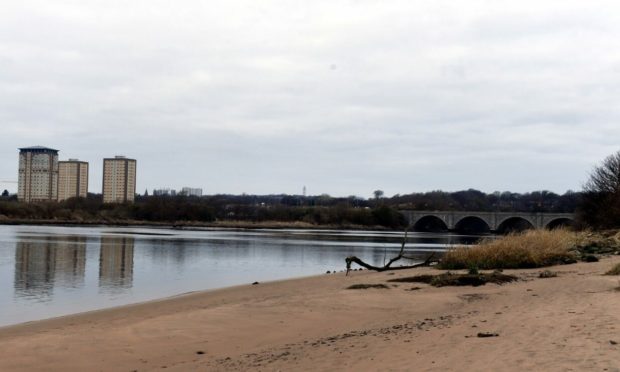An Aberdeen councillor has vowed to put up signs warning about quicksand at a beach in the city after a young boy and his dad were “sucked into it” up to their waists.
The local family’s “terrifying experience” was described in a post on the Bridge of Don Community Council’s Facebook page.
The comment, attributed to an anonymous ‘BoD resident’, recounts a walk along the beach at Donmouth that turned frightening fast when the family’s young son began sinking into the sand.
He was followed by his father, who also sank as far as his waist.
The poster said their “older son saved the day” by pulling the pair out from the quicksand.
What is quicksand?
Quicksand is simply sand that has become waterlogged to the extent that the friction between particles is reduced.
That means it is essentially transformed into a dense liquid, which can cause anything placed on it with enough pressure to sink.
However, it is not quite the mortal danger as depicted in adventure movies – it rarely extends deeper than a few feet, and is therefore unlikely to swallow anyone whole.
If you start sinking into quicksand, the best advice is not to move around too much, as that causes the liquid to become more viscous.
Instead, you can just lie back and cover a large surface area before pulling your legs out slowly – your body won’t sink, as it is less dense than the sandy liquid.
Other locals share stories
The comments on the Bridge of Don Community Council’s post made it clear that the local family were not alone in being affected by the quicksand.
One man wrote: “My dog was so excited to get into the water, it made a beeline straight across this area of mudflats to get into the water.
“She sank straight in, but thankfully she had the strength to get herself moving towards more solid sand!
“Always time it now for high tide if I can, or completely avoid this part!”
A woman added: “This happened to a group of my friends when we were young back in the 70’s, we had to be rescued by a few men fishing at the mouth of the Don.”
Local councillor Ross Grant, who represents the Tillydrone/Seaton/Old Aberdeen ward, also responded to the post and said he would move to install signs at the site.
He said: “I’m so sorry to hear this happened.
“I believe that officially this is my ward but I’d be happy to ask for enhanced signage to warn of the dangers because I think it’s probably right to say that there isn’t too much can be done but certainly people can be warned to be vigilant and tread with care.”
Signs have previously been installed on the stretch of coastline due to the dangerous erosion of the dunes there.

